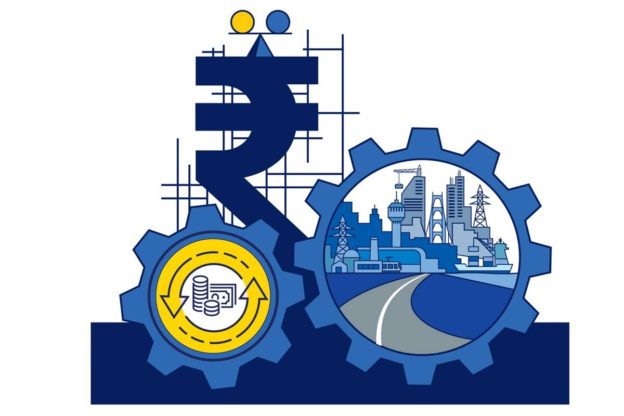The Centre will need to strike a fine balance between public and private interests while recycling asset inventory, following a multi-pronged approach that avoids the mistakes of the past
The Finance Minister unveiled the National Monetisation Pipeline (NMP) on 23 August, 2021, making progress on one of the key promises held out in Union Budget 2021. Financing the National Infrastructure Pipeline’s ambitious outlay of Rs 111 lakh crore requires an out-of-the-box approach. An approach which harnesses infrastructure’s self-financing potential rather than focus on capturing a greater share of taxpayer’s money. Hence the announcement of the NMP was quite refreshing and welcome.
The NMP’s key aim is to ‘recycle’ infrastructure asset inventory. Asset monetisation is one of the key ways in which value vested in brownfield assets can be unlocked via long term concessions (with ownership still resting with the government), raising not only capital for fresh infrastructure investments but also maximising the value of assets by introducing private sector efficiencies.
Asset monetisation in India was introduced at some level via the first Toll-Operate-Transfer transaction (TOT) of NHAI (National Highways Authority of India). Now, the NMP institutes a programme-based approach across multiple sectors and ministries alongside a monitoring mechanism, aiming to deliver Rs 6 lakh crore by FY25.
It’s a big and bold initiative for the following reasons: 1) For the first time a ‘roadmap’ has been laid out for the next four years with clearly defined targets that provide much-desired clarity to investors; 2) A wide array of sectors have been offered to investors, with investments not limited to few segments only; 3) States have been given a huge ‘nudge’ to adopt this key reform measure by creating multiple incentive structures for them.
Need to broaden the Investor Pool
Another key element of the NMP’s implementation is creating a vibrant investor pool across asset classes. There is huge appetite for a ‘well structured’ asset class amongst long-term capital providers such as sovereign, pension and infrastructure funds. At the same time, we must not lose sight of India’s own long-term capital pool of Rs 60 lakh crore locked in provident fund, insurance funds and pension funds. A multi-pronged approach of facilitating the regulatory framework for investment in NMP, developing institutional capacity for evaluating and managing such investments and fueling a collaborative mindset in domestic institutional asset managers to crowd-in with the global investor set needs to be adopted.
Getting execution right is a must
Successful implementation of the NMP will need driving a fine balance between public and private sector interests. The degree of maturity and nuances of market mechanisms and regulations are quite different for various sectors within infrastructure. A right institutional mechanism that’s able to ‘package’ opportunities well before they are offered to investors PLUS a governance structure that deals with ‘contractual issues’ professionally is a MUST if we are to avoid the ‘setbacks and failures’ that Public Private Partnerships (PPPs) have witnessed in the past.
- ‘Right structuring of the transactions’ and ‘ensuring a balanced risk-reward framework for private investors’ is critical. We should avoid situations like what happened in PPP for trains recently, where only a few bids came up despite multiple EOIs (Expressions of Interest) being initially put up by investors. Sectors like railways are at a very early degree of maturity for private participation and asset monetisation in these sectors could see the light of day if risks in the sole management domain of private investors like operational performance are transferred to it and a fair portion of market risk is still assumed by the public sector. Therefore, there’s need for ‘differentiated market structures for different asset classes at different levels of maturity.
- A large part of the brownfield asset inventory is operating under regulated tariffs. These tariffs are set for short periods and have a direct correlation with the capital structure. A well-intentioned and pro-actively engaged ‘Regulator’ again is very important to enable a defined revenue profile for the private investor and permit the investor to reap gains from introducing efficiencies in the capital structure.
- We still don’t have an ‘Institutional structure’ to deal with commercial disputes that surely will come up in such long-term concessions. The “Kelkar Committee” has offered some notable suggestions around PPPs. We must implement some of these measures to avoid the ‘mistakes’ of the past.
- There is need for a ‘specialised’ agency such as the NITI Aayog/DIPAM working in ‘tandem’ with the ‘respective line ministry’ to implement the NMP. Like for states, there must be some ‘incentive’ structure worked out for line ministries which meet their NMP targets and ‘penal’ provisions for those which do not.
- State and public sector enterprises will need to be ‘hand-held’ for the first year or two to guide them through the process. An institutional framework by way of a ‘Centre for Excellence’ should be mooted to guide the state governments and other asset inventory holding bodies.
Government to act as a steward
To sum up, the provision of infrastructure and maintenance of service standards is a core role of the Government. While the assets are monetised, the government would need to act as a steward guarding the interests of the infrastructure users as well as the private investors. If executed well, this could be one of the boldest and biggest reforms that the infrastructure sector has witnessed in the last few decades.
https://www.financialexpress.com/economy/national-monetisation-pipeline-nmp-sound-execution-a-must-for-success-of-initiative/2324511/







